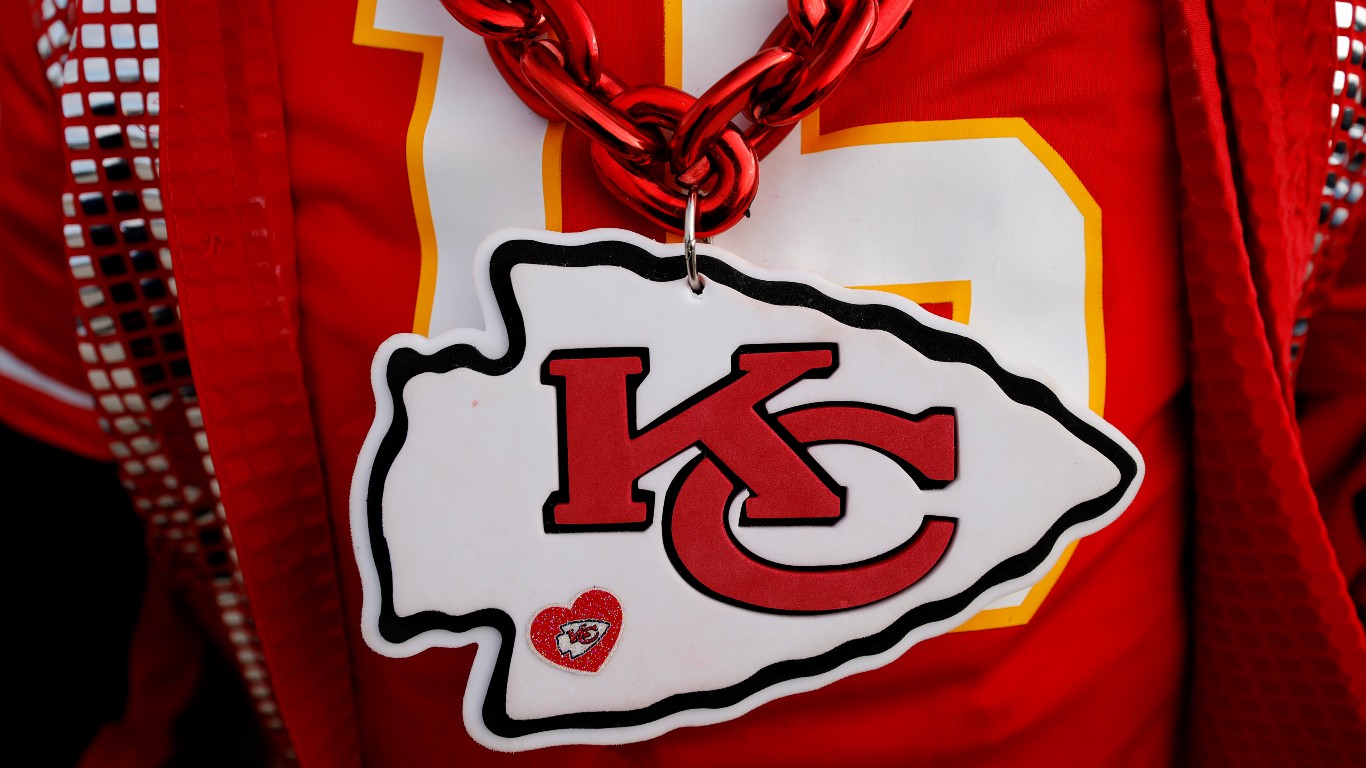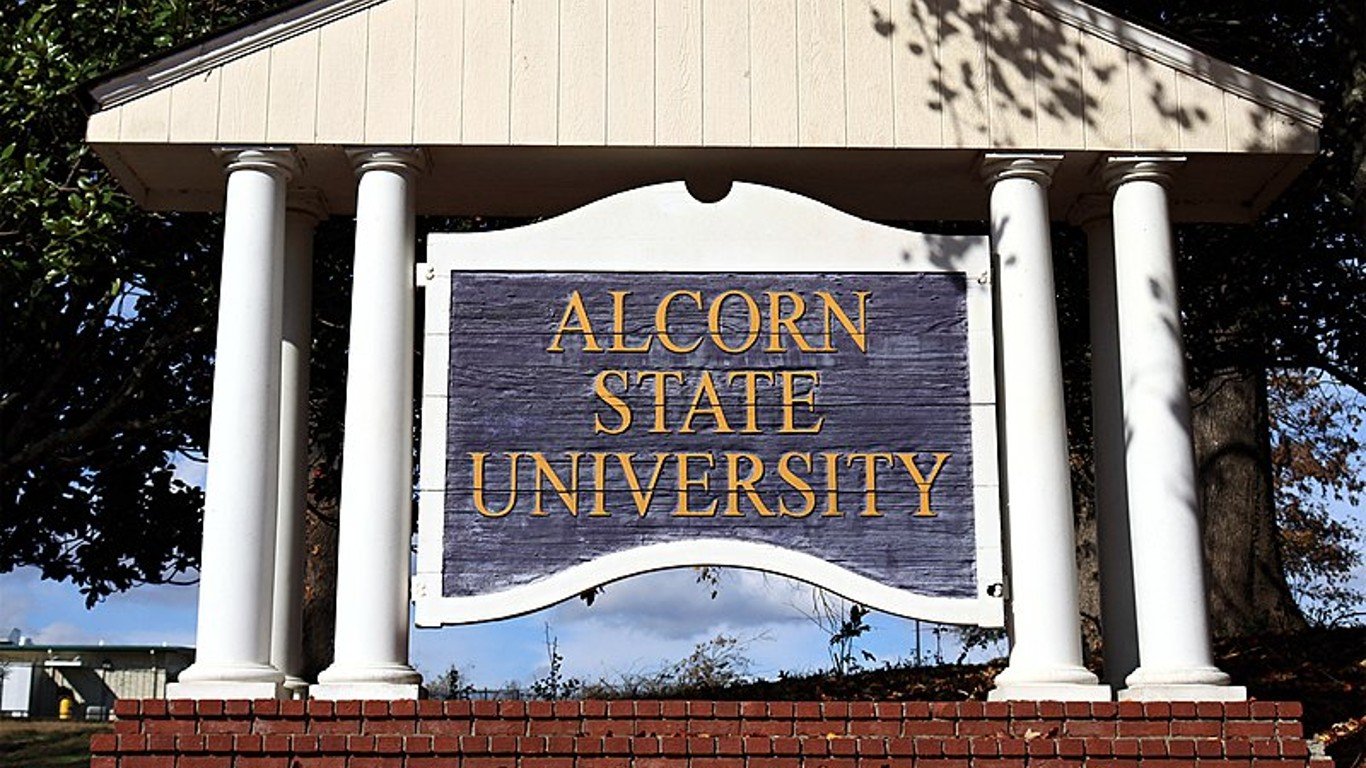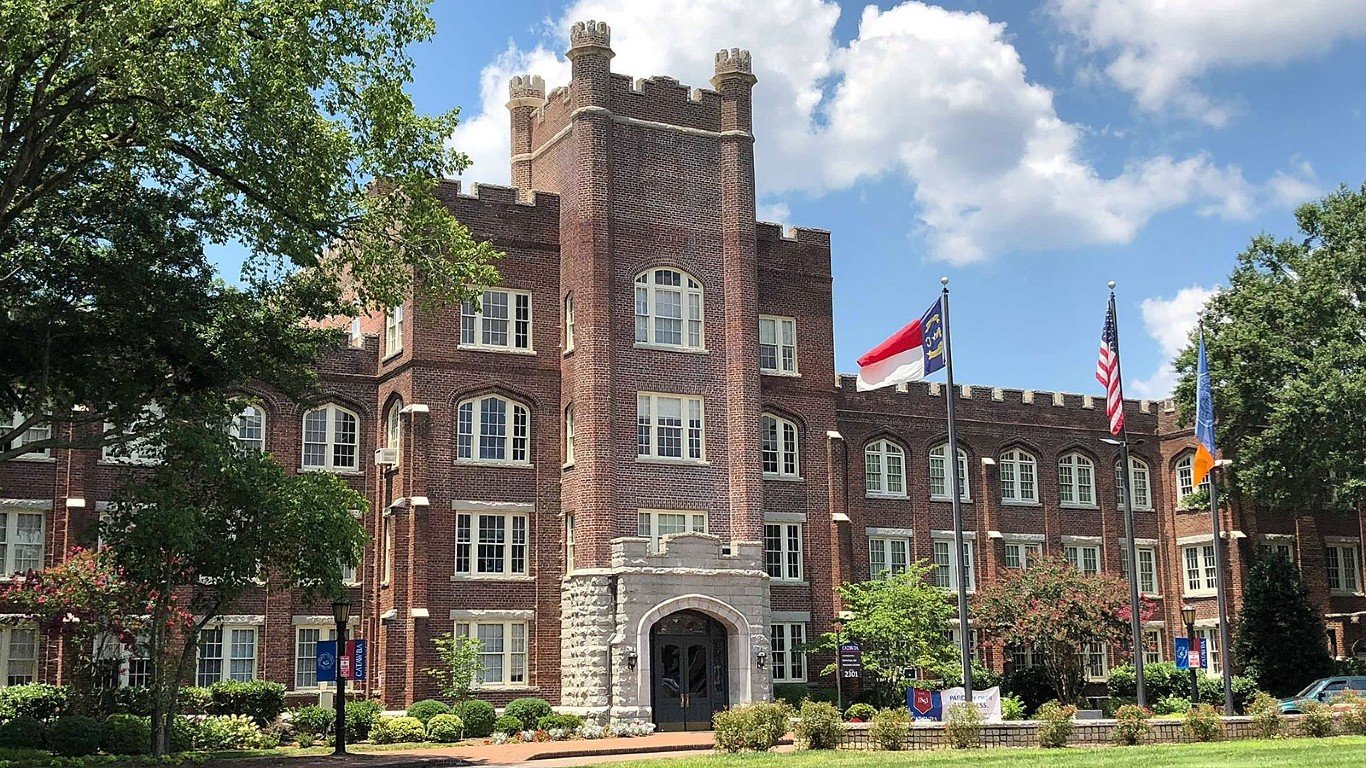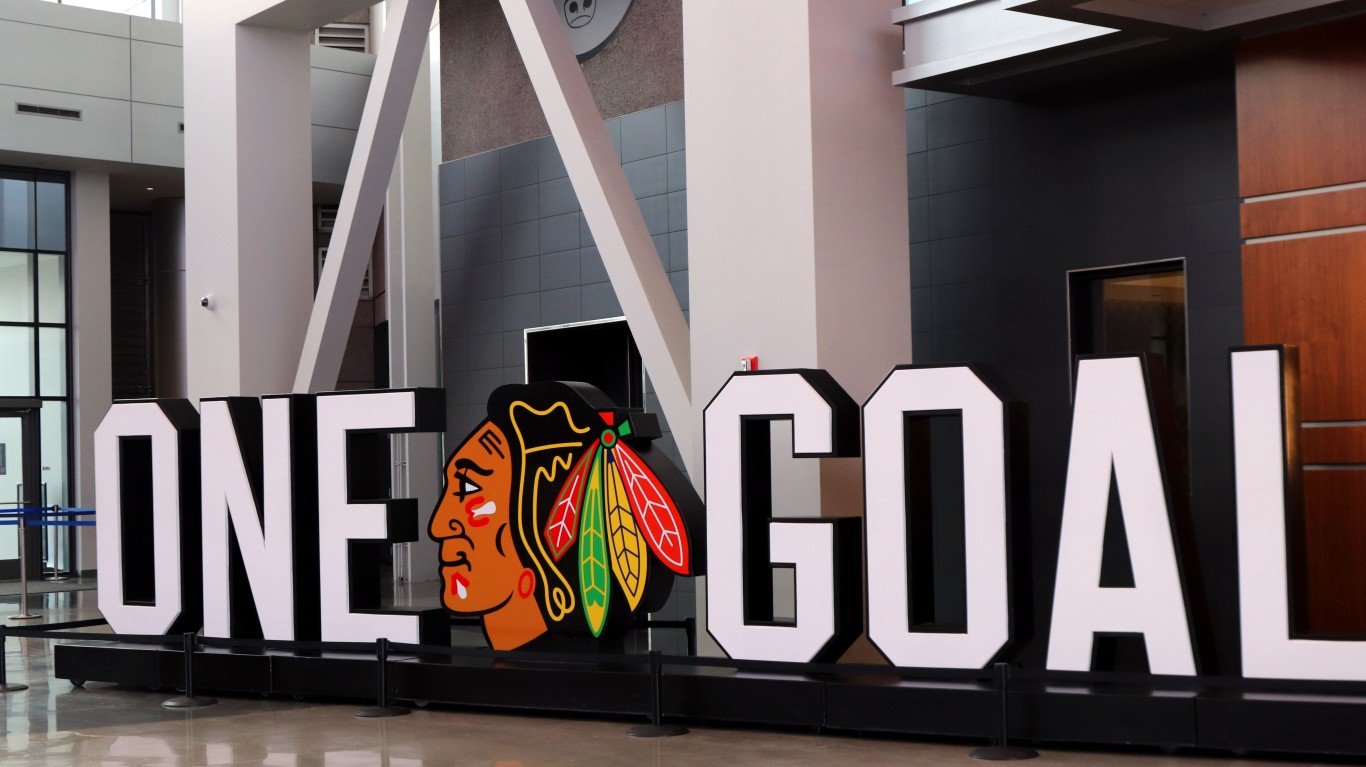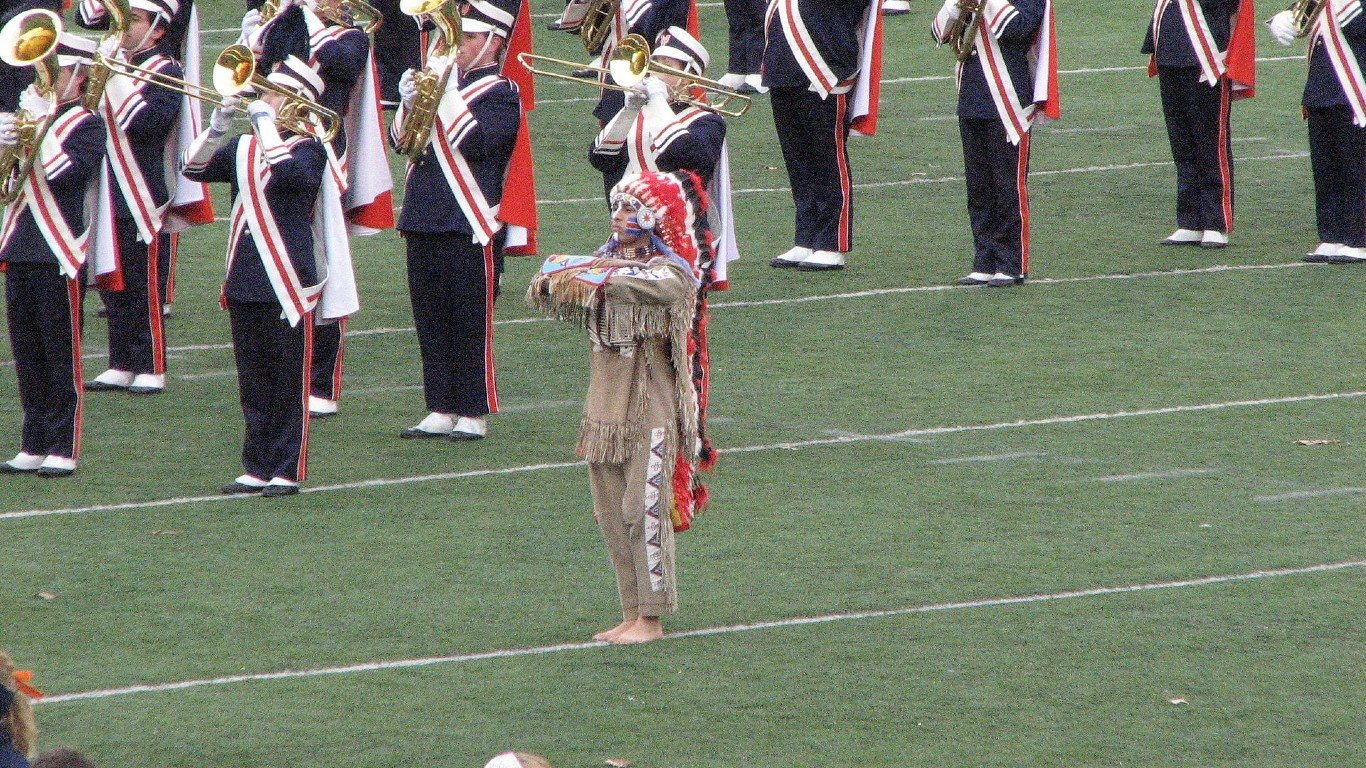For the third time since 2020, the Kansas City Chiefs are headed to the Super Bowl to face off against the Philadelphia Eagles, and again we may see pushback against the former team’s arrowhead logo and name, which some perceive to represent cultural appropriation of Native American imagery.
The Chiefs franchise has opposed a rebranding, making it the only National Football League team that uses both a name and a logo that references Native American culture. In 2020, the only other holdout, the Washington Redskins, rebranded itself the Washington Commanders and scrapped its Indian head logo. (Read about the surprising reasons these companies and brands changed their names.)
In 2021, the Cleveland Indians baseball team followed suit by rebranding itself the Cleveland Guardians and dropping its cartoonish Native American mascot. The Atlanta Braves remains the only Major League Baseball team that uses an indigenous name and imagery.
The MLB has defended the Atlanta Braves franchise, saying the team has “built an active and supportive relationship with Native American leaders and communities,” citing support from the Eastern Band of Cherokee Indians (EBCI) and the Georgia Council on American Indian Concerns.
But critics like Chief David Hill of the Oklahoma-based Muscogee Nation dismiss this strategy. “I don’t think that’s how Indian Country works,” Hill’s spokesperson Jason Salsman told ABC News in 2021, using the term that encompasses all Native American communities. “You need to speak to the whole of Indian Country and make sure that you get a grand consensus.”
Since 2005, some NCAA athletic programs have been compelled to remove Native American-themed nicknames and symbols after the collegiate sports association said it would ban these nicknames and symbols from postseason tournaments.
The NCAA also has said teams using generic terms like “tribe” and “braves” are acceptable so long as they aren’t paired with native imagery, such as the depiction of feathers, which hold traditional spiritual significance among some indigenous groups. The NCAA also allows athletic programs to use the names of specific local tribes if the schools have obtained permission from them. (These are the teams with the most NCAA championships.)
24/7 Tempo gleaned information from archived news articles to compile a list of professional and college sports teams with names that have come under fire over the years for various reasons, including cultural appropriation. Teams who have already changed names, such as the Washington Commanders, were excluded.
Out of 15 teams or athletic programs that continue to be criticized for cultural appropriation, eleven have been targeted for using Indian imagery or costumes. Three teams on this list are considered offensive by some for Christian religious reasons. Filling out the list is the Rainbow Warriors of the University of Hawaii at Manoa, in which some argue the word “Rainbow” should be removed because of its association to the LGBT community.
Alcorn State Braves and Lady Braves
> Sport/League: College Basketball
> Location: Alcorn State University, Alcorn, Mississippi
This historically black college is a holdout against the 2005 NCAA ban on the use of Native American mascots, nicknames, and related images in postseason tournaments. Local sports writers have often referred to the college campus as “the reservation.” The college stopped calling its arena the “Scalpin’ Grounds” in 1993, however, and no longer uses an Indian-head logo similar to the one used by the since-renamed Washington Redskins football team until 2020.

Atlanta Braves
> Sport/League: MLB
> Location: Atlanta, Georgia
Unlike the Cleveland Indians, which changed their name in 2020, the Atlanta Braves have decided not only to keep their name and logo but also support the “tomahawk chop” celebratory cheer and gesture that Atlanta fans copied from fans of the Florida State University Seminoles football team. Major League Baseball Commissioner Rob Manfred defended the decisions, citing the team’s “phenomenal job with the Native American community,” according to USA Today. In 1985, the Atlanta Braves retired Chief Noc-A-Homa, an “Indian” mascot who used to reside in a teepee in the bleachers.
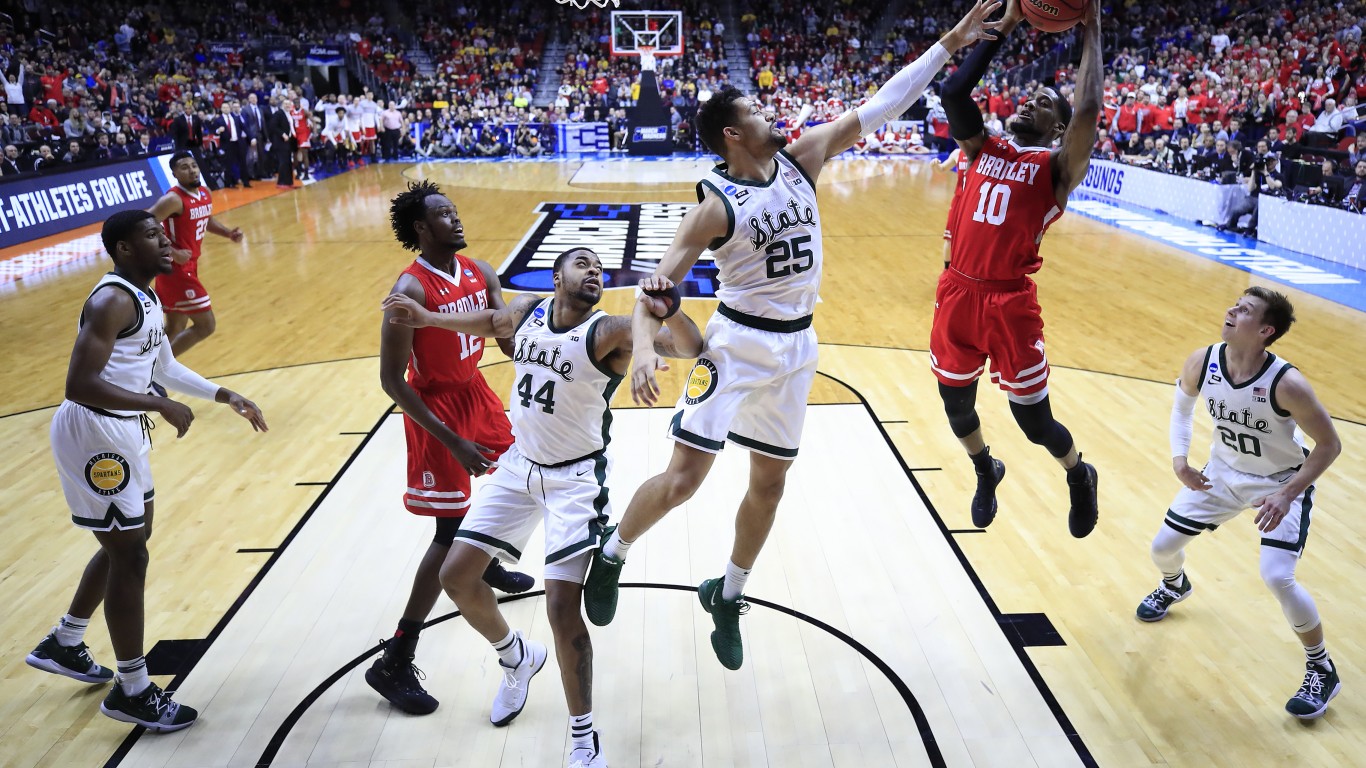
Bradley Braves
> Sport/League: College Basketball
> Location: Bradley University, Peoria, Illinois
In 1992, Bradley University removed all Native American imagery from its athletic program, according to the university’s website. It changed its mascot to a bobcat, but that never gained traction with its fans, so in 2014, it introduced a gargoyle mascot – a nod to the stone statues that decorate the college’s signature building – named Kaboom!, a reference to a local sports announcer’s oft-used phrase. Bradley says it has kept the “Braves” name, however, claiming that it’s “non-specific to a particular tribe” and is not “hostile or abusive.”
Catawba Indians
> Sport/League: College Football
> Location: Catawba College, Salisbury, North Carolina
Catawba College is named after a local Native American tribe, which doesn’t object to the use of its name. The NCAA accepts “Indian” so long as the tribal name is included. There is still reportedly some disagreement among tribal leaders about the use of the term “Indians.” The NCAA “recognizes that a Native American tribe is a distinct political community,” NCAA senior vice president Bernard Franklin, told the Associated Press. Last year, the college changed its logo to remove images of feathers, a common symbol used to represent Native Americans.
Chicago Blackhawks
> Sport/League: NHL
> Location: Chicago, Illinois
The Chicago Blackhawks hockey team has defended the use of its nickname because it refers to and honors a historical figure from the Illinois Sac & Fox tribe. Chief Black Hawk was a warrior who sided with the British in the War of 1812, leading attacks against settlers in what are now Illinois and Wisconsin. The team didn’t take the nickname directly from the warrior chief, however: According to CNN, it was the nickname of the 86th Infantry Division during World War II, in which the team’s original owner, Frederic McLaughlin, served as a commander.

DePaul Blue Demons
> Sport/League: College Basketball
> Location: Chicago, Illinois, DePaul University
DePaul University is one of two schools on this list that mulled removing a name due to religious objections to naming a team after minions of Satan. In 1998, the university was poised to rebrand teams, but it backed off after an outpouring of support for the name, its devil logo, and demon mascot. Another reason why the university considered the change was to rebrand the basketball team amid a late-90s losing streak, according to the New York Times.

Duke Blue Devils
> Sport/League: College sports
> Location: Durham, North Carolina, Duke University
Like DePaul University’s Blue Demons, Duke’s Blue Devils have seen their mascot become the subject of religious-based objections. An international Christian Group called The Resistance said in 2008 that the school should not use devil imagery in its athletic program. “If the team were named the Blue Nazis would that be ok?” asked the group’s spokesperson Mark Dice at the time. “There would be outrage across the country.”
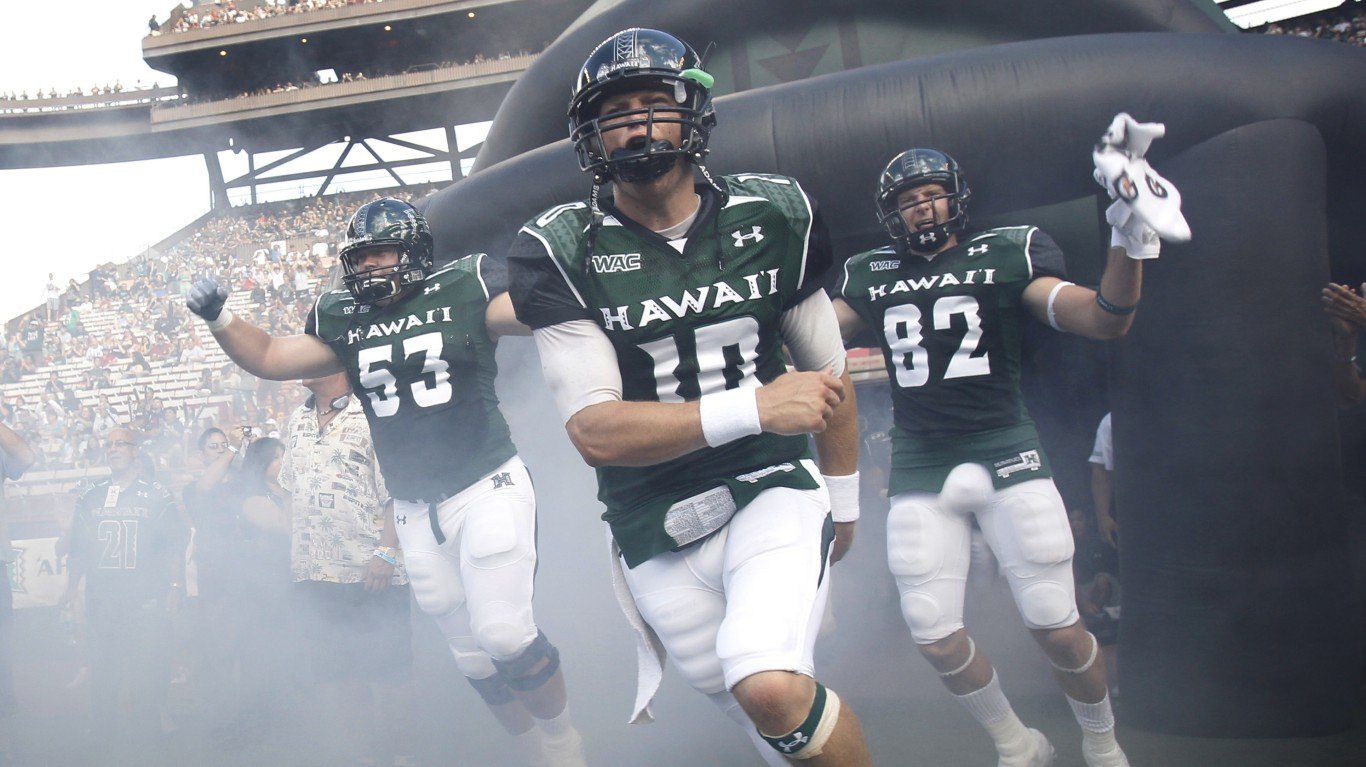
Hawaii Rainbow Warriors
> Sport/League: College Football
> Location: University of Hawaiʻi at Mānoa, Honolulu, Hawaii
In 2000, the university removed “Rainbow” from its football team, pointing to the rainbow as a gay pride symbol. “That logo really put a stigma on our program,” Hugh Yoshida, who was head of the university’s athletic program at the time, told the Washington Post. The decision angered local gay rights advocates. In 2013 the university backed away from removing “Rainbow” from all of its men’s teams. The nickname originated in 1923 when a rainbow appeared over the field during an upset victory against Oregon State.
Illinois Fighting Illini
> Sport/League: College Basketball
> Location: University of Illinois Urbana-Champaign, Champaign, Illinois
The word “Illini” is shorthand for “Illiniwek,” referring to the Illinois Confederation of Algonquin tribes that lived in present-day Illinois. According to the sports news website FanSided, the name first appeared in a university newspaper from the early 1870s, though its exact origin is unknown. The school’s sports teams began using the term in 1907 and the term “fighting Illini” was first used in a basketball game in March 1911. In 2007, the university scrapped its Chief Illiniwek logo, depicting a Native American wearing an elaborate feather headdress.

Kansas City Chiefs
> Sport/League: NFL
> Location: Kansas City, Missouri
Like fans of the Florida State University Seminoles and the Atlanta Braves baseball team, Kansas City Chiefs fans have adopted the “tomahawk chop” celebratory cheer. And like the Braves, the Chiefs continues to use names that some indigenous activist groups and their supporters say is cultural appropriation. The team’s name and use of Native American imagery has enabled local businesses to follow suit. “Our youth are subjected to advertisements on radio, TV, and marketing displays in every grocery store, including pork chops advertised as the ‘tomahawk chop’ and ‘Can’t Stop the Chop’ ads featuring football fans singing the stereotypical song,” said the Kansas City Indian Center. In 2021, the Chiefs removed Warpaint, the team’s horse mascot, and banned fans from wearing Native American costumes.
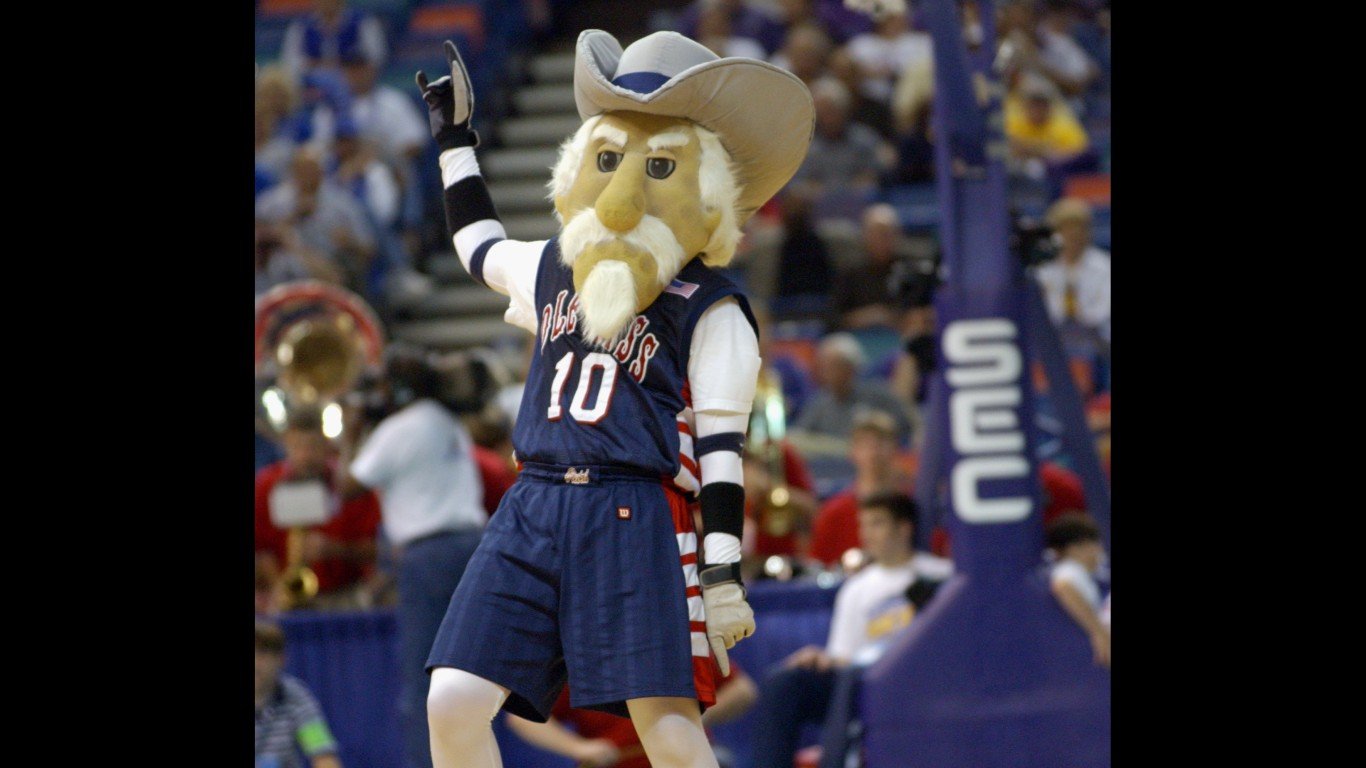
Ole Miss Rebels
> Sport/League: College sports
> Location: University of Mississippi, Oxford, Mississippi
For more than a century, the University of Mississippi’s main campus has been called “Ole Miss.” While it seems like a harmless shorthand for “Old Mississippi,” the term originated as a nickname used by slaves to refer to a slave master’s wife. The university’s team nickname “Rebels” is a nod to the Confederate secessionist soldiers of the Civil War. USA Today sports columnist Dan Wolken wrote in 2020 that Ole Miss fans should think about the future when “this country finally and uniformly treats the losers of the Civil War as losers.” In the 1990s, the university banned the Confederate Flag and in 2003 it dropped the Colonel Reb mascot that depicted a caricature of a Southern plantation owner.

San Diego Padres
> Sport/League: MLB
> Location: San Diego, California
After the Washington Redskins changed its name to the Washington Commanders in 2020, other teams with problematic names were targets of debate, including the San Diego Padres baseball team. Padre is Spanish for “father,” but also refers to a Catholic priest. Some of these religious men set up missions and schools across the American Southwest, at which indigenous peoples were often forcibly converted and otherwise mistreated. A group of Catholic leaders called for a name change in 2020 and asked the team to scrap the “Swinging Friar” mascot, a caricature of a robed friar with a tonsure haircut.
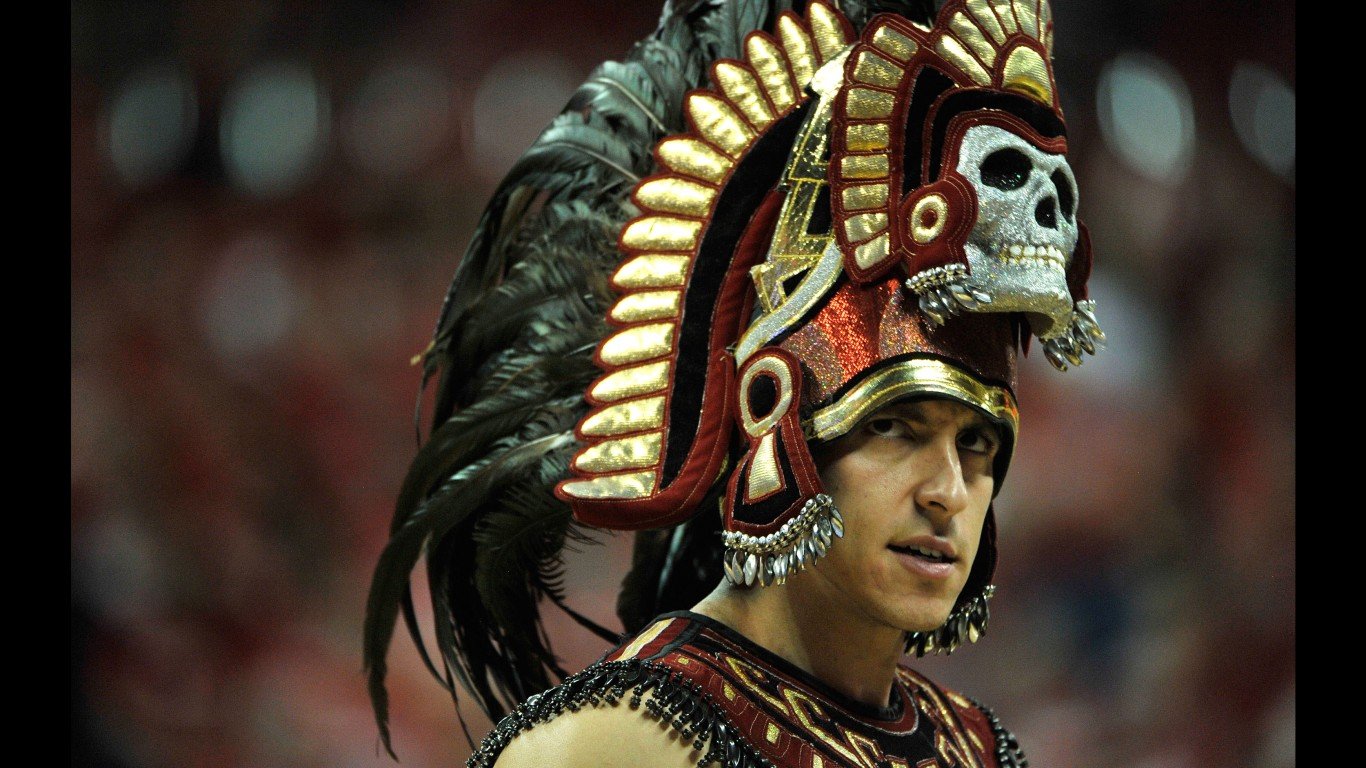
San Diego State Aztecs
> Sport/League: College sports
> Location: San Diego, California, San Diego State University
Like other teams that have adopted the name of specific Native American group, the San Diego Aztecs has been subject to similar criticisms for using the name of the pre-Columbian Native American ethnic group of Central Mexico, as well as a fight song referencing Montezuma II, the Aztec king killed by Spanish soldiers during the conquest of Mexico in the early 16th century. The university has mulled banning the Aztec Warrior, an unofficial mascot consisting of a student dressed in a traditional Aztec costume, but the SDSU website says it will retain it as a “spirit leader,” but will “not refer to the Aztec Warrior as a ‘mascot’.”
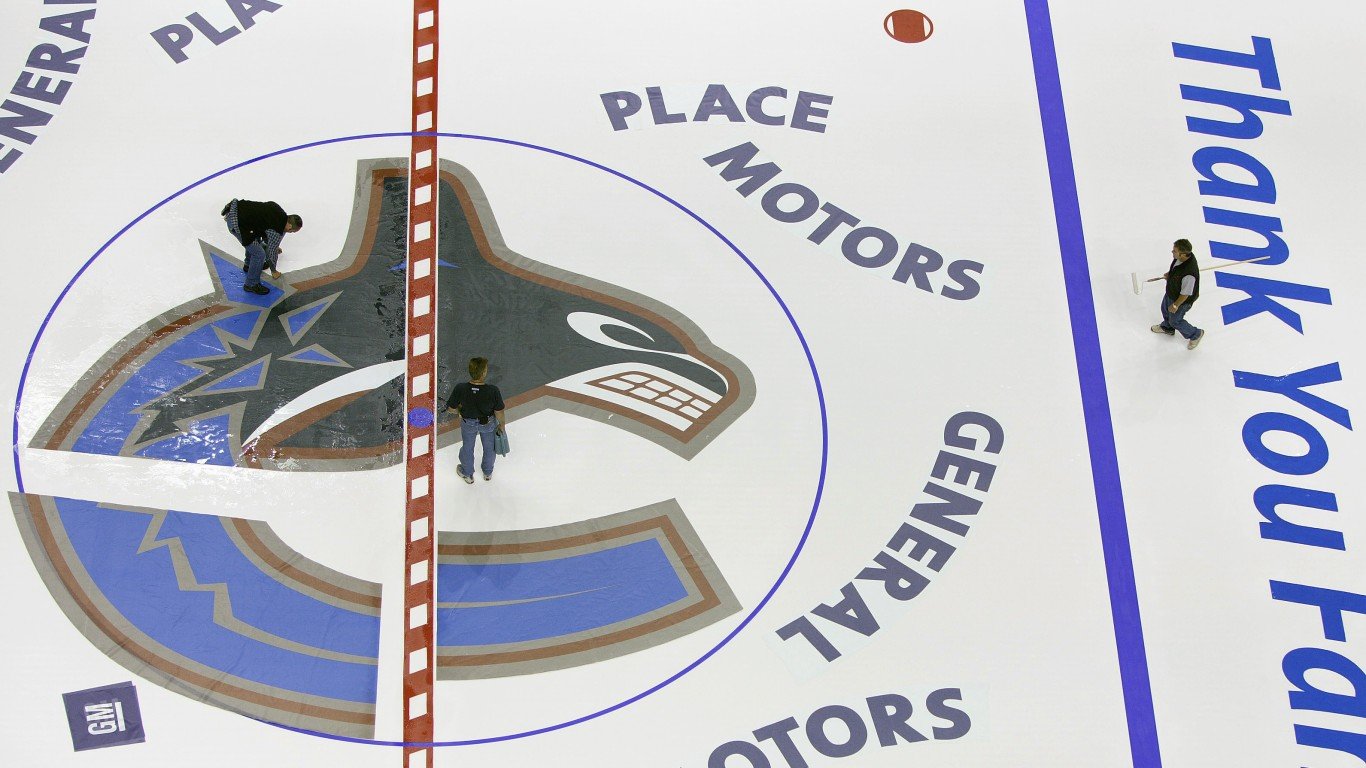
Vancouver Canucks
> Sport/League: NHL
> Location: Vancouver, Canada
The Canucks main logo depicts a killer whale in the artistic style of the Haida, an indigenous group whose traditional homeland on islands off the coast of British Columbia known for their totem poles and other wood carvings. The whale logo has been the team’s brand since 1997, but it has been criticized by some for cultural appropriation and for the fact that the team did not consult with indigenous groups before adopting it. “As a Canucks fan and an historian of Indigenous-settler relations in BC, the orca logo is, without a doubt, cultural appropriation,” tweeted Sean Carleton, a University of Manitoba history professor, in 2020. (In addition, the term “Canuck,” while often used affectionately to describe Canadians and especially French Canadians, is sometimes considered derogatory.)

William & Mary Tribe
> Sport/League: College Basketball
> Location: College of William & Mary, Williamsburg, Virginia
In 2004, the NCAA requested that William & Mary and other schools determine if Native American imagery or nicknames were hostile or abusive. While the NCAA ruled that the use of “tribe” was not offensive, it said the school should stop using feathers in its athletic logo. William & Mary unsuccessfully appealed the decision and has since replaced that logo, but it has kept the “Tribe” name. Feathers hold particular spiritual significance to many Native groups, roughly similar to the symbolism of a Christian cross or other religious iconography.
